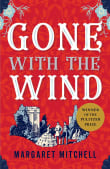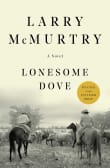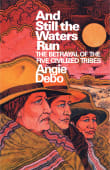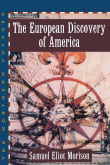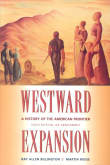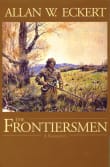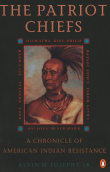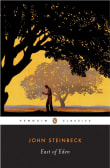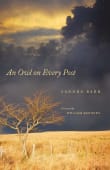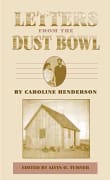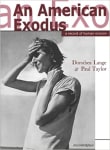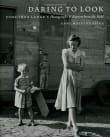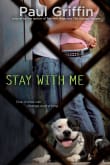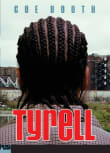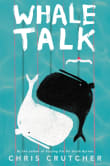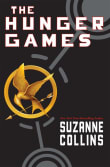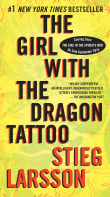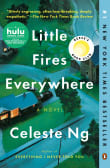The Grapes of Wrath
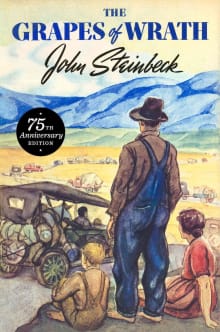
Book description
'I've done my damndest to rip a reader's nerves to rags, I don't want him satisfied.'
Shocking and controversial when it was first published, The Grapes of Wrath is Steinbeck's Pultizer Prize-winning epic of the Joad family, forced to travel west from Dust Bowl era Oklahoma in search of the…
Why read it?
19 authors picked The Grapes of Wrath as one of their favorite books. Why do they recommend it?

Set within the greatest mass migration in American history, Steinbeck’s 1939 classic follows the Joad family as they join nearly three million others who escape the Dust Bowl of the American Midwest.
Usurious banks have foreclosed and crushed the bereft farmers. More than 200,000 refugees head for California, and the Joads join them in an ambling caravan of rattling jalopies. Young Rose of Sharon moves pregnant across the continent, emblematic of both the promise and the peril of the human condition. She’s surrounded by family and hangers-on who ford the wasted continent, only to face a glut of labor in…
From Greg's list on exposing the hidden underbelly of the American empire.

‘…and the comfortable people… felt pity at first, and then distaste, and finally hatred for the migrant people.’
Powerful and epic in its account of hardship and brutality, loneliness, segregation, exploitation and man’s inhumanity to man, The Grapes of Wrath somehow maintains a sense of hope in the determination and perseverance of the Joads and countless others, hungry and desperately poor, in their struggle to build a new life . I’m not sure why it’s only now that I’ve come to read this monumental work but one element that stands out, apart from the power of the prose and Steinbeck’s…

Though set less than a century ago, the world of Steinbeck’s novel is so very different from our own. This masterpiece follows the Joad family as they head west to California, escaping the hardship and poverty of the Oklahoma Dust Bowl.
Depression-era America is described with such detail and emotion that the reader feels almost like a companion of the Joads, each of whom are rendered with precision and depth. In other hands, this might have been a grim, gloomy tale, but Steinback evokes themes of loyalty, kindness, and pride with peerless power and skill.
From Nick's list on books that take you to another world.
If you love The Grapes of Wrath...

My passion is reading novels. Generally speaking I like to read the novel before I see the screen or TV adaptation. This is partly because I do not want to know the plot, especially the ending before I read the book and partly because I want to see how it was adapted to the other medium.
But, over the years there have been several instances when it was the dramatic representation that led me to read a book I never read before. The first time this happened I was a teenager. I saw the 1940 John Ford movie version of…
From Leslie's list on novels that have great screen or TV adaptations.

Steinbeck can see through his character’s eyes. I get chills when he captures private moments.
Faces on pickers being pushed off land in the dustbowl during the Depression. I tasted abject poverty when supper was passed out on pie tins—one tablespoon of beans in each. Dimes were gas money to follow a dream of picking work a brochure of orange orchards in California promised, not for bread.
The hardships mesmerized me—burying Grandpa along the highway; daughter Rosasharn rocking her swaddled stillborn to ward off the suspicion of border inspectors. In an abandoned railroad car as a night’s shelter a man…
From Jerome's list on human resolve in the face of moments of despair.

Again, it’s a missing piece from my childhood reading list.
Several of my books have covered the same era of the Great Depression, and Steinbeck helped me understand it through a ground-level lens and its human dimensions of devastation. He sets a scene like few can, with insights that sear and stay.
But don’t believe me, consider this passage: “In the eyes of the hungry there is a growing wrath. In the souls of the people the grapes of wrath are filling and growing heavy, growing heavy for the vintage.”
Anger, indeed, and fruit for contemplation.
If you love John Steinbeck...

“It happens that every man in a bank hates what the bank does, and yet the bank does it. The bank is something more than men, I tell you. It’s the monster. Men made it, but they can’t control it.”
Steinbeck’s epic novel follows a family of sharecroppers from Great Depression Oklahoma, thrown off their land by economic forces beyond their control.
He beautifully demonstrates the process of economic transformation through the journey of its protagonists as they suffer heart-rending setbacks but also defend themselves from the exploitation they face proving “repression works only to strengthen and knit the repressed.”
From Nick's list on to understand why the world is in such a mess.

The historically inspired migration of Oklahoma farmers to find work in California during the Great Depression and Dustbowl forms the basis of honesty and goodness struggling against greed and cruelty.
I think Tolkien would have loved this book. I hope he read it. Since Reagan and Thatcher, we’ve had in the west this insane idea of libertarianism—complete deregulation of the private sector—as though it’s in any way a foil to communism. But what’s the difference between a politburo and a handful of monopolies controlling every industry?
Steinbeck gives amazing truth in fiction to the timeless consequences greed has not for…

This is probably not a book you consider when you think of retirement, but the reason I've included it in this list is that it is a story of pursuit, hardship, sacrifice, and endurance.
Steinbeck's prose puts you in the center of the drama and action as if you are part of the Joad family.
It's hard to be unhappy and ungrateful in your own life when you read about the constant struggles throughout the book. They are underdogs. You feel for them. You root for them. And in return, you gain a new appreciation for your own life.
From Robert's list on retirement to help you create more meaning.

As most people know, this classic novel is about poor farmers suffering during the Great Depression and trying to make their way to a better life in California. They endure drought, foreclosure, displacement, homelessness, and, most heartbreakingly, indifference from those in a position to help. The protagonist’s resilience and determination to make the world a better place no matter the odds and regardless of the adversity he faces is truly an inspiration, particularly for those of us with so many fewer obstacles than he had.
From Howard's list on inspiring people to improve the world.
Want books like The Grapes of Wrath?
Our community of 12,000+ authors has personally recommended 100 books like The Grapes of Wrath.




